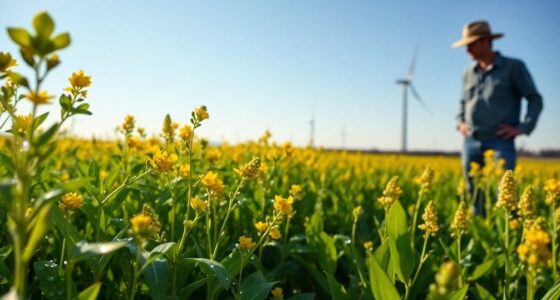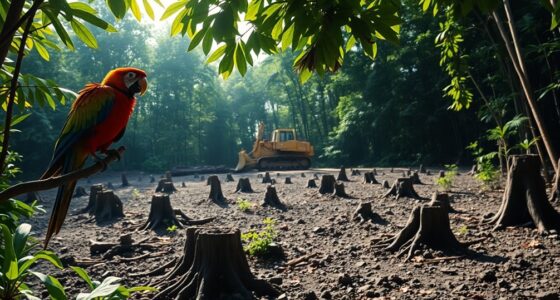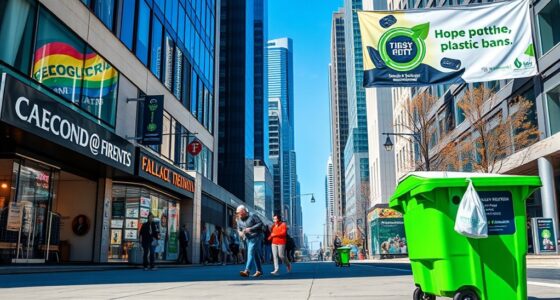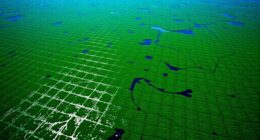Imagine a world where animals can move freely across landscapes without fear of crossing busy roads or encroaching development. Wildlife corridors serve as vital links, helping animals find food, mates, and safe shelter. But creating these pathways isn’t simple, and many challenges stand in the way. Understanding how they work and why they matter could change how we coexist with nature — and the story is far from over.
Understanding Wildlife Corridors and Their Functionality
Wildlife corridors are essential pathways that connect fragmented habitats, allowing animals to move safely between areas. When natural landscapes are broken up by roads, farms, or urban development, these corridors serve as vital links that prevent animals from becoming isolated.
They help species find food, mates, and shelter, reducing the risk of inbreeding and population decline. Functionally, wildlife corridors can be strips of forest, grassland, or other natural cover that run through human-altered landscapes. To effectively support animal movement, designing these corridors with sound design principles ensures minimal disturbance and maximum safety for wildlife. They’re designed to mimic natural pathways, providing safe passage and reducing human-wildlife conflicts. By maintaining these connections, you support healthier ecosystems and help preserve biodiversity.
Proper planning and design ensure corridors are effective, enabling animals to navigate safely across fragmented environments.
The Importance of Connecting Fragmented Habitats
Connecting fragmented habitats is crucial for maintaining healthy populations and resilient ecosystems. When habitats become isolated due to urban development, roads, or agriculture, animals struggle to find food, mates, and safe breeding sites. This fragmentation increases the risk of genetic bottlenecks, reducing genetic diversity and making populations more vulnerable to disease and environmental changes. Incorporating sound vibrations into habitat restoration efforts is also being explored as a way to enhance cellular regeneration and promote overall health in some species. By linking these patches through wildlife corridors, you give animals a safe passage to access resources and migrate freely. This promotes gene flow, supporting healthier, more adaptable populations. Additionally, connecting habitats helps prevent human-wildlife conflicts by directing animals away from urban areas.
Examples of Successful Wildlife Corridor Projects
Numerous wildlife corridor projects around the world have demonstrated how strategic planning can restore connectivity between fragmented habitats.
In Kenya’s Mara-Serengeti corridor, landowners and conservationists collaborated to create a protected passage for migrating wildebeests and predators, reducing human-wildlife conflicts.
The Yellowstone-to-Yellowstone to Yukon initiative links national parks across North America, enabling animals like bears and elk to travel safely over vast distances.
In Australia, the Gondwana Link connects remnants of ancient forests, allowing species like the western ringtail possum to move freely between habitats.
These projects show that targeted efforts, community involvement, and careful planning can successfully reconnect ecosystems, benefiting both wildlife and local communities.
Furthermore, understanding permits and inspections such as local building codes and zoning regulations is essential to ensure the legal viability and sustainability of wildlife corridors.
Such examples prove that wildlife corridors are practical solutions for maintaining biodiversity in human-dominated landscapes.
Challenges and Considerations in Creating Corridors
Creating effective wildlife corridors involves navigating a range of challenges that can hinder their success. One major obstacle is land acquisition, as securing the necessary space often faces resistance from property owners or development interests.
Habitat fragmentation due to urban sprawl or infrastructure projects can also limit corridor effectiveness, making connectivity difficult. Additionally, you must consider ecological factors, such as ensuring the corridor supports the species’ needs and migration patterns.
Funding and political support can present further hurdles, delaying or preventing projects. Maintaining ecological integrity requires ongoing management, like controlling invasive species or preventing illegal activities.
Finally, balancing human safety with wildlife movement demands careful planning to avoid conflicts, making the process complex but vital for long-term success. When designing corridors, considering the size and dimensions of the passageways can greatly influence their effectiveness for different species.
How Communities and Policymakers Can Support Wildlife Connectivity
How can communities and policymakers work together to support wildlife connectivity? First, you can advocate for the integration of wildlife corridors into local development plans and zoning laws. Policymakers should prioritize funding and policies that preserve and restore natural habitats, making connectivity a key goal. Supporting land trusts or conservation easements helps protect critical corridors. Additionally, implementing wildlife crossings on roads reduces animal fatalities. Promoting the development of water parks that include naturalistic features and habitat corridors can also serve as safe passages for animals in urban areas.
Conclusion
By supporting wildlife corridors, you help ensure animals can move safely across human-altered landscapes. Your awareness and involvement can promote better planning, funding, and policies that protect these vital pathways. When communities work together and policymakers prioritize connectivity, we create a safer environment for wildlife and a healthier planet for everyone. Remember, even small actions can make a big difference in maintaining these crucial links for future generations.








